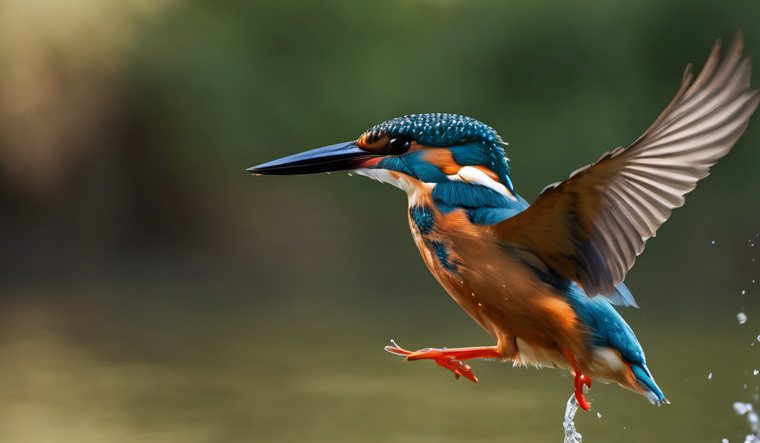Scientists have delved into the genetic makeup of 30 distinct kingfisher species, seeking to unlock the secrets behind these birds' remarkable ability to dive headfirst into water without causing harm to their brains.
Kingfishers, renowned for their lightning-fast plunge-diving maneuvers to capture fish, exhibit a rare aeronautic feat. "It's a high-speed dive from air to water, and it's done by very few bird species," explains Chad Eliason, a research scientist at Chicago's Field Museum and the study's lead author. Nevertheless, such a behavior carries inherent risks, prompting researchers to explore the genetic adaptations that enable them to dive without injury.
This investigation, published in the journal Communications Biology, has unveiled a fascinating connection between kingfishers' genes and their extraordinary diving prowess.
Shannon Hackett, the study's senior author and associate curator of birds at the Field Museum, elucidates the mystery: "For kingfishers to dive headfirst the way they do, they must have evolved other traits to keep them from hurting their brains."
Notably, not all kingfishers rely on a piscine diet, as many species prefer land-based prey such as insects and lizards. Previous research by Jenna McCollough and Michael Andersen from the University of New Mexico has shown that fish-eating kingfishers are not closely related within the kingfisher family tree, suggesting multiple, independent transitions to a piscivorous lifestyle.
The diversity of kingfisher diets and their corresponding diving abilities has piqued scientific curiosity. Hackett emphasizes, "The fact that there are so many transitions to diving is what makes this group both fascinating and powerful from a scientific research perspective." The study presents the opportunity to uncover a unified explanation for this remarkable evolutionary trait.
To investigate this further, a team of researchers, including Lauren Mellenthin, Taylor Hains, Stacy Pirro, Michael Anderson, Jenna McCullough, and Chad Eliason, examined the DNA of 30 kingfisher species, encompassing both fish-eating and non-fish-eating varieties. These investigations utilised specimens from the Field Museum's collection, with tissue samples preserved for DNA analysis.
Within the Pritzker DNA Laboratory at the Field Museum, researchers sequenced the full genomes of each species, providing a comprehensive genetic profile of these birds. Sophisticated software was employed to analyze the billions of base pairs in these genomes, unveiling shared genetic variations among diving kingfishers.
The study identified specific genetic modifications associated with both diet and brain structure in fish-eating kingfishers. Notably, mutations were found in the AGT gene, linked to dietary flexibility in other species, and the MAPT gene, responsible for tau proteins related to feeding behavior.
Tau proteins, essential for stabilizing microstructures within the brain, also play a crucial role. Excessive accumulation of tau proteins is linked to traumatic brain injuries and Alzheimer's disease in humans. Hackett notes, "I started to wonder, why don't kingfishers die because their brains turn to mush? There's gotta be something they're doing that protects them from the negative influences of repeatedly landing on their heads on the water's surface."
The study suggests that tau proteins may serve a dual purpose. Hackett speculates that "the same genes that keep your neurons in your brain all nice and ordered are the things that fail when you get repeated concussions if you're a football player or if you get Alzheimer's." She surmises that strong selective pressure might be acting on these proteins to safeguard the birds' brains.
This research opens the door to further inquiries into how these genetic variations impact the proteins produced and influence brain resilience against concussive forces. Eliason remarks, "Now, we know which of the underlying genes are shifting that help create the differences that we see across the kingfisher family, but now that we know which genes to look at, it created more mysteries. That's how science works."
Beyond expanding our understanding of kingfisher genetics and its potential implications for brain injury research, Hackett underscores the importance of museum collections. She reflects, "It traces back to the ability of individual specimens to tell new stories through time. And who knows what we'll be able to learn from these specimens in the future? That's why I love museum collections."


